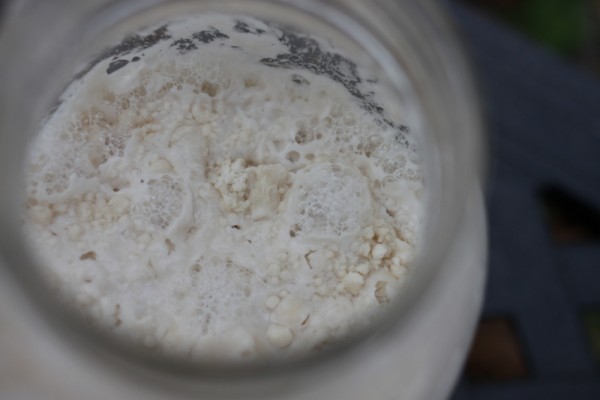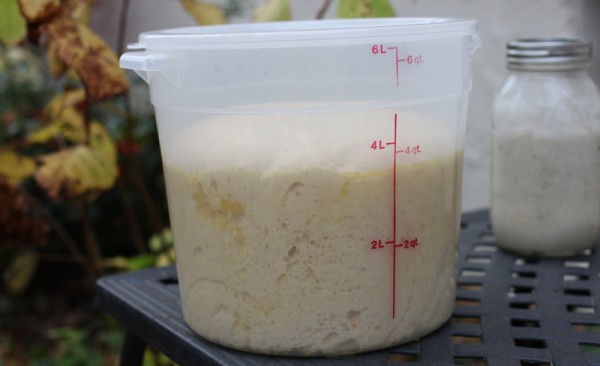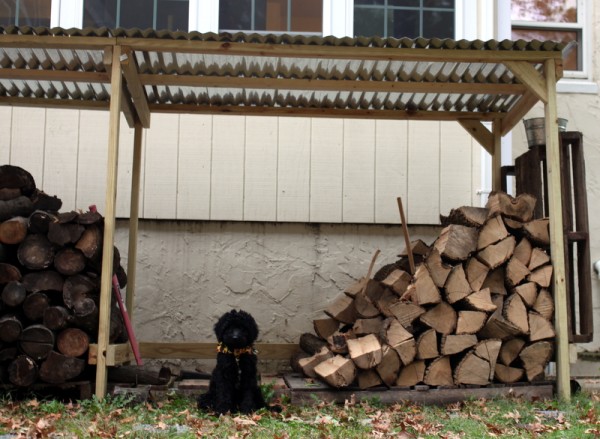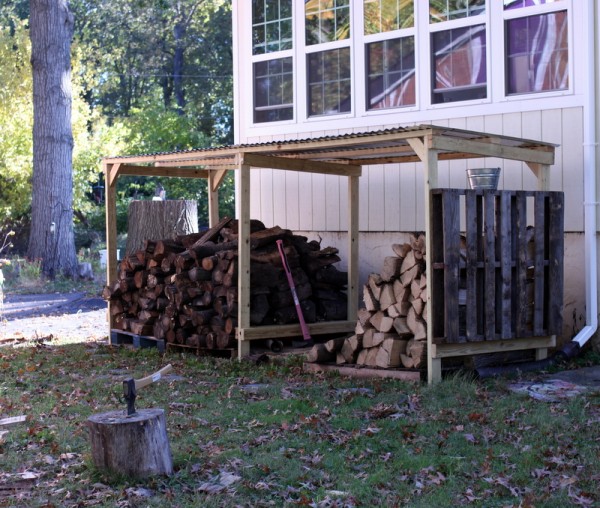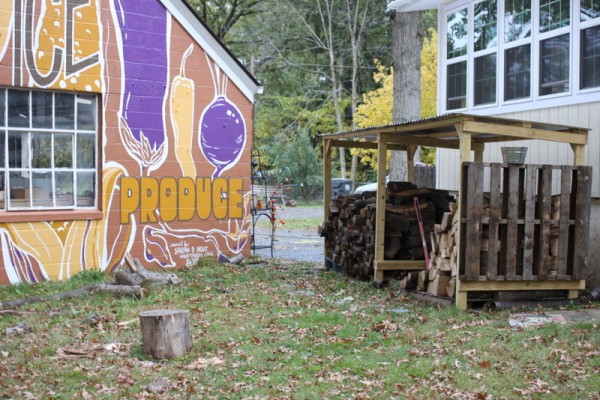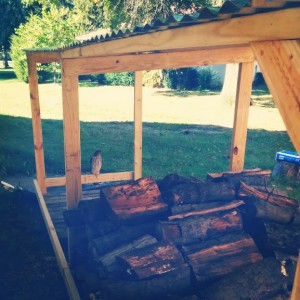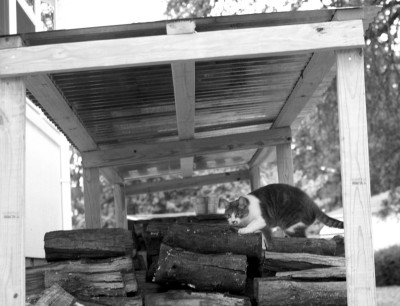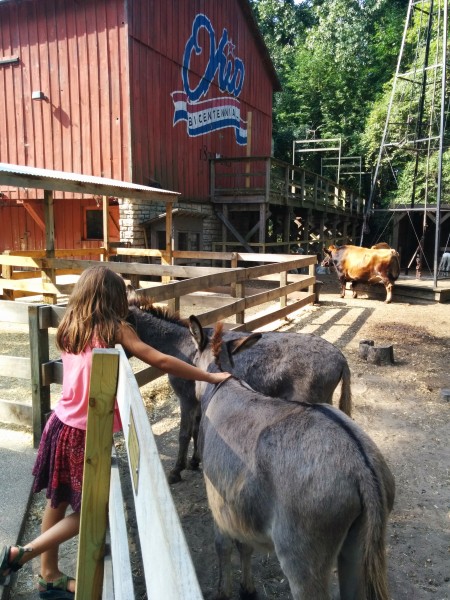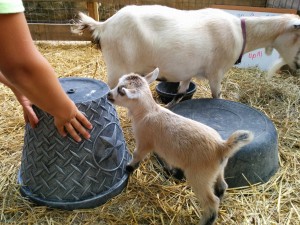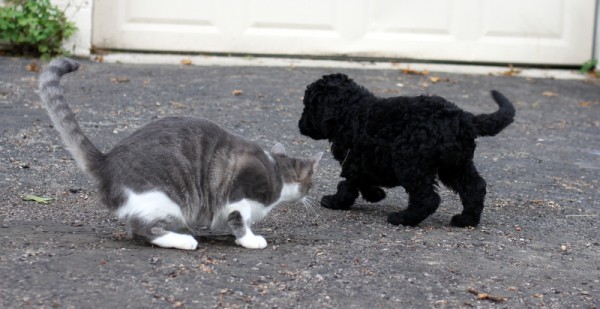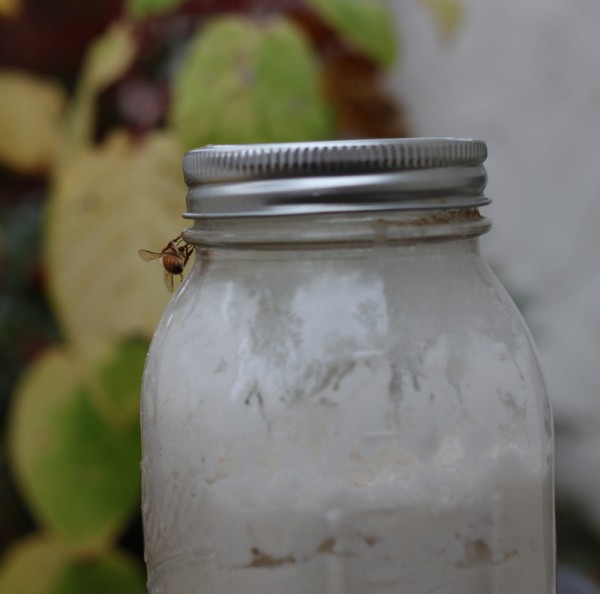 Winter is a great time to add a new pet to the family. No, this isn't another post about Annabel. And I'm not referring to the bee checking out this jar either. I'm talking a pet of the culinary variety - sourdough.
Winter is a great time to add a new pet to the family. No, this isn't another post about Annabel. And I'm not referring to the bee checking out this jar either. I'm talking a pet of the culinary variety - sourdough.
Sourdough is a grain-based, aerobic, yeast and bacteria culture. The most vibrant sourdoughs are made over years of using and feeding, but there's nothing particularly complicated about keeping sourdough. The easiest method is to start with a strong starter shared by a friend.
If you need to start one yourself, here's what to do: 1) Set aside equal parts flour (your choice of flour type - we use all-purpose, unbleached organic wheat) and unchlorinated water at room temperature in a clean glass jar. Cover loosely with a few layers of cheesecloth or gently closed mason lid. 2) In two days, discard half of this mixture, stir, and feed with equal parts flour and water again. 3) Repeat discarding and feeding every two days. 4) After a few feedings, a sourdough smell and visible bubbles appear. 5) Continue feeding regularly and use after a few weeks when the sourdough reliably bubbles within four hours of feeding.
Keeping Sourdough Going
You can ‘train’ your culture to tolerate your baking preferences. If you bake frequently, you can feed daily and the culture will begin to multiply more rapidly. If you don’t bake frequently, you may be able stretch feedings to three or four days by feeding thickly (reduce water by half) or keeping the culture in a cooler place. To transfer to a new flour (rye, whole wheat, etc.) use some of the old culture to start a new culture by feeding with half old/half new flour for a few feedings and then transition to using all new flour.
Use refrigeration if you need to be away from your culture for a few weeks. Feed twice the flour amount you might regularly feed just before you leave and put the culture in the fridge. This method has allowed us to travel for up to ten days without finding a sourdough sitter.
Using Sourdough Starter
The wild yeasts in sourdough can be used to flavor doughs, enhance yeast-risen doughs, and even replace added yeast all together.
For flavoring baked goods (pancakes biscuits, etc.), substitute sourdough culture for up to one quarter of the liquid.
To enhance yeast-risen recipes, substitute sourdough starter for one quarter of the water and reduce commercial yeast by a quarter. Allow the dough to rise for an extended period of time - the longer you let dough rise (punching down each time it doubles), the stronger the sourdough flavor and probiotic nutritional benefit. Then form loaves and bake as usual.
Depending on the thickness of your sourdough starter, the substitutions may not be exactly one-for-one. Experimentation is the best way to determine how recipes will work when using sourdough.
Sourdough can provide all the rising power a loaf of bread needs, but on its own timeline. Typically wild yeasted sourdough breads require twelve to forty eight hours to fully culture the recipe and create the air pockets we know as risen bread. Wild yeasted breads often use 1 part sourdough culture, 4-5 parts flour, 1-2 parts water, salt and sugar.
While there are ‘recipes’ for wild yeasted breads, like our sourdough challah, making a bread that uses your particular culture that works in your particular environment calls for more art than science. Keeping careful notes and a trial/error approach to baking is the best way to take advantage of sourdough cultures.
Do you keep a sourdough starter? In the future, I'll write about troubleshooting sourdough issues, so send me your questions and concerns!

